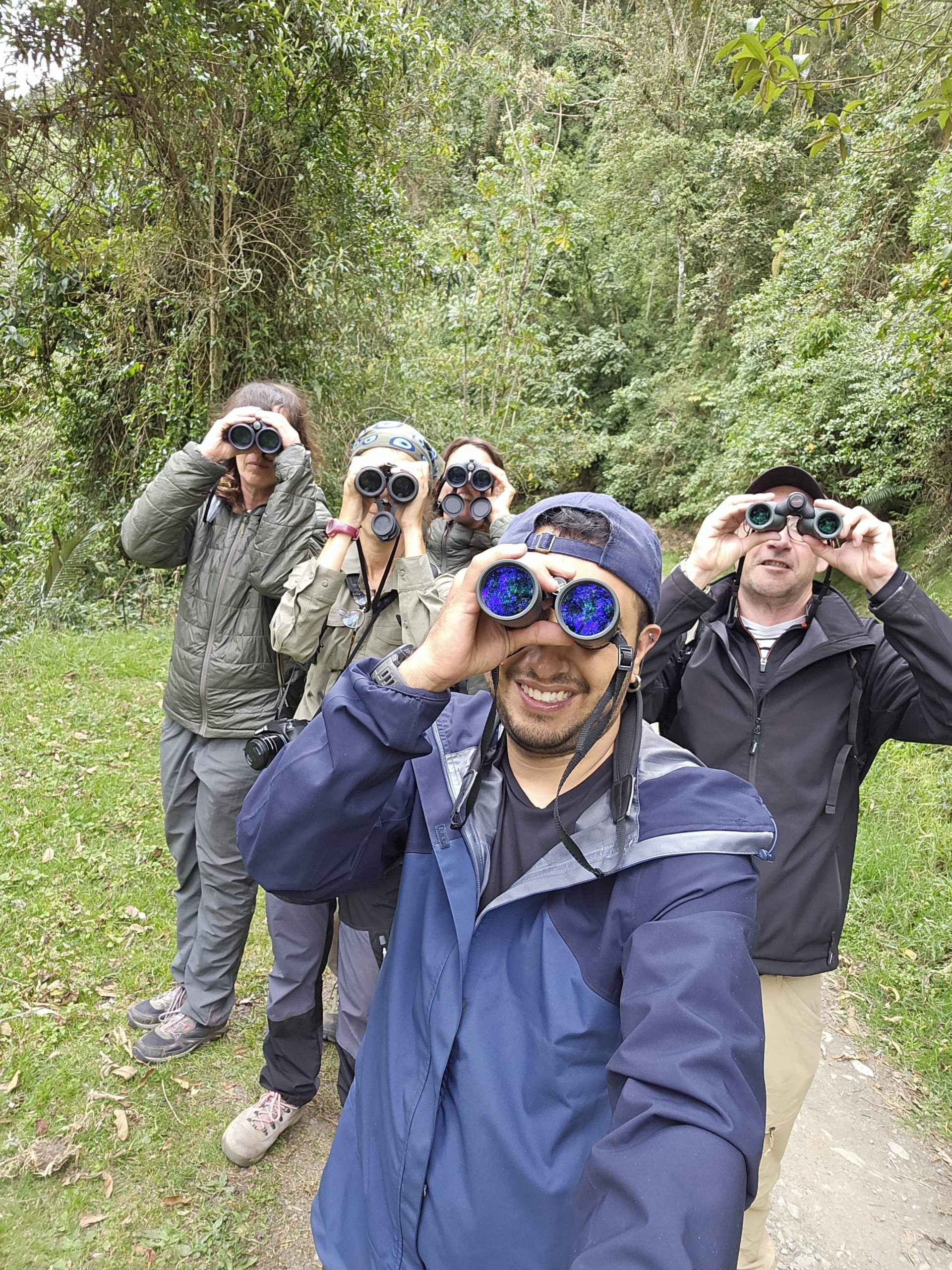For anyone who feels a connection to the natural world, birding offers an engaging path to deeper discovery. No matter your background, the world of birds is accessible and waiting to be explored. If you’re curious about identifying the avian life around you, learning where to find them, and becoming an active participant in this enriching hobby, read on. We’ll equip you with the initial knowledge and tips to get started.
Essential Equipment
Binoculars
When starting your birding journey, a good pair of binoculars is your most valuable tool., High Definition (HD) binoculars with BAK4 prisms are widely recommended for their image clarity and brightness. When choosing your first pair, two common configurations stand out: 8×42 and 10×42. While both are excellent options, the 8×42 excels in denser environments like forests, offering a wider field of view and better focus on closer birds. The 10×42, with its higher magnification, shines in open areas, allowing you to spot more distant birds. Compact options like 8×25(32) and 10×25(32) are also available, offering portability. However, the larger 42mm objective lenses in the 8×42 and 10×42 allow for greater light transmission and a wider field of view, ultimately enhancing your birding experience. The best choice ultimately depends on your individual preferences and the typical birding environments you anticipate exploring.

The Optional but Rewarding Addition: A Camera
Although not a mandatory piece of equipment for getting started with birding, a camera offers significant advantages. One of its primary benefits is aiding in identification. Capturing clear photographs allows for detailed examination of plumage, beak shape, and other characteristics that might be difficult to fully observe in the field. Furthermore, a camera lets you create lasting visual memories of the beautiful birds you encounter, building a personal collection of your discoveries. Keep an eye out for future posts where we’ll delve into specific camera recommendations for bird photography enthusiasts.
Expanding Your Senses: The Voice Recorder.
Another valuable tool to consider adding to your birding kit is a voice recorder. As any birder knows, many species can be elusive, offering only fleeting glimpses or remaining entirely hidden within dense foliage. However, these same shy birds are often accomplished vocalists. Recording their songs and calls provides a powerful means of identification, unlocking crucial information about the birdlife in your area. Learning bird songs is an engaging and intellectually stimulating facet of birding. Imagine the satisfaction of confidently identifying a species simply by its unique melody – a skill that will surely impress your friends and deepen your connection to the avian world.
Where to find the birds?
One of the most remarkable aspects of birds is their incredible adaptability, allowing them to thrive in an astonishing array of ecosystems, from the humid embrace of dense rainforests to the stark beauty of arid deserts. They’ve even cleverly integrated into urban environments, making their homes in our parks, gardens, and the very structures we build. This means that you can realistically expect to encounter at least one bird species every time you step outside, no matter where you are in the world. However, if you’re birding in a biodiversity hotspot like Colombia – and especially here in the lush landscapes of the Coffee Region – prepare to be truly amazed. It’s not uncommon to spot upwards of 10 different bird species within just ten minutes of focused observation! This incredible avian diversity, fueled by varied altitudes and habitats like the cloud forests and coffee plantations surrounding Salento, makes Colombia a truly exceptional destination for both beginner and experienced birders alike. You might even be surprised by the vibrant tanagers flitting through the trees in your own neighborhood!
How to Identify Your Feathered Friends.
Identifying birds is a rewarding skill that opens up a whole new dimension to your appreciation of nature. It relies on carefully observing their unique characteristics. Pay close attention to their physical features, such as the shape and size of their beak (which often hints at their diet), their overall body size and shape (think slender warbler versus a stocky thrush), their distinct color patterns (from bold markings to subtle variations), and even their typical behaviors (how they fly, forage, or perch). Remember that these clues often vary significantly between bird families and individual species, making each identification a little puzzle to solve!
Your First Detective Kit: Field Guides.
For those just starting out, a good field guide is like your essential detective manual, patiently guiding you through the world of birds. It thoughtfully lays out the different bird families, grouping similar species together to help you see common traits. You’ll find clear illustrations that highlight key identification features, along with descriptions of where these birds typically live (their distribution), the kinds of habitats they prefer (forests, wetlands, grasslands), and how they typically behave (their feeding habits, flight patterns, and social interactions). Think of it as building a foundational understanding of bird “types” before diving into individual species.
The Digital Age of Birding: ID Apps.
Bird ID apps, like Merlin, are undeniably like having a super-smart assistant right in your pocket. They offer incredible convenience for quick identifications, especially when you need an immediate answer in the field. However, when you’re in the crucial learning phase of becoming a birder, sometimes the ease of scrolling through seemingly endless lists on an app can actually hinder your ability to truly connect a bird you’ve observed with its name and key characteristics. You might miss the subtle details that a field guide encourages you to actively look for. While those automatic ID features on apps are impressive, try not to lean on them too heavily when you’re trying to learn. The real joy and understanding come from you noticing the patterns yourself, not just having an app tell you the answer.
Beyond Sight: Identifying by Song.
Get ready to use your ears! Many birds are masters of disguise and you might only ever hear them. Learning their songs and calls is a fantastic way to identify species you might never see. Recording these sounds and then using a platform like Xeno-canto, where birders from all over the world share their recordings, can be incredibly helpful in your auditory learning journey. It’s like unlocking a secret language of the avian world!
Birding is more than just ticking off a list; it’s about connecting with nature through observation and sound. Take the time to truly see and listen to the birds around you, whether it’s in your own garden in Armenia or on a dedicated birding excursion. As you learn to identify them by sight and song, you’ll deepen your appreciation for the natural world. Keep exploring, keep learning, and most importantly, keep enjoying the beauty of birds!
If you’re seeking a personalized birdwatching experience guided by local experts with extensive knowledge of specific regions or bird species, don’t hesitate to contact us. At Pajareros Birding Tours we’re ready to help you plan your next adventure! Reach out to WhatsApp +573160834407 or send us an email info@pajarerosbirdingtours.com

